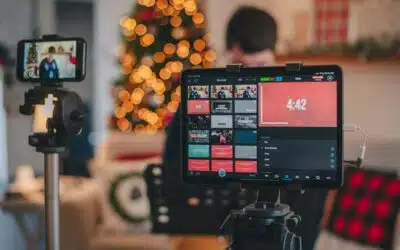Live streaming has become an increasingly popular way to share events, presentations, and other content with a wider audience. With the ability to transmit live video and audio over the internet, live streaming allows you to reach a global audience and engage with them in real-time. In this blog, we’ll explore what live streaming is all about and how it works.
What is live streaming?
At its most basic, live streaming is the act of transmitting live video and audio over the internet. It can be used for a variety of purposes, such as sharing events or presentations, providing training, or simply broadcasting content to a wider audience.
Why do it?
In addition to increasing your audience, live streaming can also be a great way to build a sense of community around your content. Viewers can interact with you and each other in real-time through chat or social media, creating a sense of connection and engagement. This is especially useful for events or presentations where audience participation is encouraged.
audience.
One of the main benefits of live streaming is the ability to increase your audience. With traditional media, your reach is limited to those who are physically present or who happen to catch your content on TV or radio. With live streaming, anyone with an internet connection can tune in, regardless of location. This makes it an effective way to reach a wider, more diverse audience.
Build a community.
In addition to increasing your audience, live streaming can also be a great way to build a sense of community around your content. Viewers can interact with you and each other in real-time through chat or social media, creating a sense of connection and engagement. This is especially useful for events or presentations where audience participation is encouraged.
ENGAGEMENT.
Live streaming can also help with post-event engagement. Many platforms allow viewers to watch recordings of the live stream after the event has ended, which can help to extend the reach and impact of your content.
4 MAJOR COMPONENTS IN A LIVE STREAM SETUP.
So, what do you need to get started with live streaming? There are a few key components to consider:
1. Live streaming equipment: This includes the video and audio source (such as a camera or smartphone), the video encoder (the software or hardware that encodes the video and audio into a format that can be streamed over the internet), and any other necessary accessories, such as lighting or sound equipment.
2. Streaming destination: This is the platform or service that will host your live stream, such as YouTube, Facebook, or a dedicated streaming service like Twitch.
3. Internet connection: A stable, high-speed internet connection is crucial for live streaming. Make sure to test your connection beforehand to ensure that you have enough bandwidth to support the stream.
4. Live streaming services: Depending on your needs, you may want to consider working with a live streaming agency to handle the technical aspects of your stream. These agencies can provide a range of services, such as video production, audio engineering, and platform management.
By considering these key components and working with a reputable live streaming agency, you can create a professional, high-quality live stream that engages and connects with your audience.



